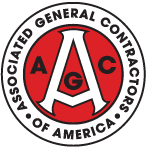While working with a contractor who may have given a set tender, the majority of cost overruns are set in his proceeds, though several could still be conveyed to the owner. If you are working with a cost-plus or time-and-materials contract, or work as your respective contractor, then a good number of cost overruns ooze from your pocket.
The foremost estimating error types include the following:
Insufficient allowances: The most common problem that occurs is that a low estimate may be given by a contractor along with a list of allowance for material, and this amount may turn out to be very high as compared to the given estimate.
Wrong assumptions: There might be items that may be assumed to be included under the bid proposed by the contractor or the subcontractor but these might not actually be covered. Or perhaps, one might assume a standard septic system to be sanctioned but the requirement may differ in actuality.
Omissions: These are items inadvertently left farther than the estimation, and there are mainly either hard costs of construction or soft costs, such as fess, permits, etc. Omissions might be owing to the missing items and specifications that were left out and thus not included in the bid and estimate.
New techniques/materials: Every new technique of building or material has a learning curve. Despite creating provisions of permitting some extra time, the final time taken may surpass all rough estimates.
Price changes: Labour costs or material costs may mount between the project and the estimate.
Other reasons that actual costs may surpass projected costs consist of:
Unclear or incomplete specifications and plans: The dearth of apparent plans leaves much scope for divergence on what, precisely, was the bid. This could result in extra costs and change orders eventually.
Cost-plus bids: The final cost is left unidentified unless a definite maximum is known, and the former always turn out to be in excess of the estimated budget.
Job-site surprises: Veiled conditions, such as wood decay, water problems, insect damage etc may rise up while the construction may be in progress. In certain cases, these ought to have been spotted by more conscientious and meticulous examination.
Construction/design errors: During the construction work, if some construction goes wrong, it has to be torn out and constructed yet again, and this may require the owner to pay twice the amount as thought of initially. This is because someone else may be hired again for giving the appropriate and final touch to the reconstructed work.
Owner changes: Being the owner, you may choose to make use of better floorings, roofing, windows, etc. all through the project; or choose to move windows, walls, etc subsequent to the installation work.










